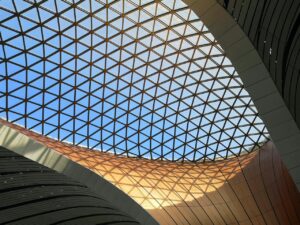Ripple’s CTO David Schwartz recently sat down with our internal teams to discuss the world’s current most famous piece of blockchain technology, non-fungible tokens (NFT).
But what exactly are NFTs?
Fungible Tokens vs. Non-Fungible Tokens
To begin, let’s review what it means for something to be fungible. Something is fungible if it’s identical to all of the other items of value around it. In other words, ‘like can be replaced by like’.
Non-fungible tokens, on the other hand, are unique in the marketplace and hold their own inherent value. Unlike fungible tokens, they are generally not divisible because it’s difficult to understand what a fraction of one of them would mean.
For example, an NFT might represent a piece of physical artwork. How would that artwork be divisible because unless you have all three thirds of that very artwork, you don’t actually have it.
Are NFTs a Trend?
David explained that it’s too early to determine whether non-fungible tokens are a fad, but NFTs do have the potential to shift the way we exchange the ownership and rights of specific information.
The current crop of NFTs seems to be exploiting people’s desire to own something other people can’t, but the fact that they’re transferrable has an element of potential profit to it for artists, musicians, creators and those hoping to make money from secondary sales.
Additionally, there’s the real possibility for long-term benefits here. NFTs could become a way of owning digital rights to items including computer games, songs, movies and the like.
The 5 Layers of NFTs
As David shared, successful NFTs are not just something every blockchain supports. There’s an entire ecosystem involved featuring five key layers:
- Infrastructure – where the non-fungible tokens are stored
- Minting – the process that enables people to easily create NFTs
- Publishing and Storage – where the content an NFT entitles people to is published and stored
- Custody – the wallet, browser or viewer that enables people to show others their NFTs
- Marketplace and Swap – where NFTs are acquired and where creators can possibly purchase residual second-market items
As our CTO shared, non-fungible tokens aren’t going anywhere anytime soon. With their potential to change the way people store and exchange items of value, whether physical or digital, it’s important we help effectively pioneer the way forward.
What ideas do you have for creating an exciting and smooth user experience in the custody and marketplace layers of the NFT ecosystem?
The RippleX team is working to build new tech to enable use cases like NFTs and more. If you are a developer and are interested in building on the XRP Ledger, find out more today.


